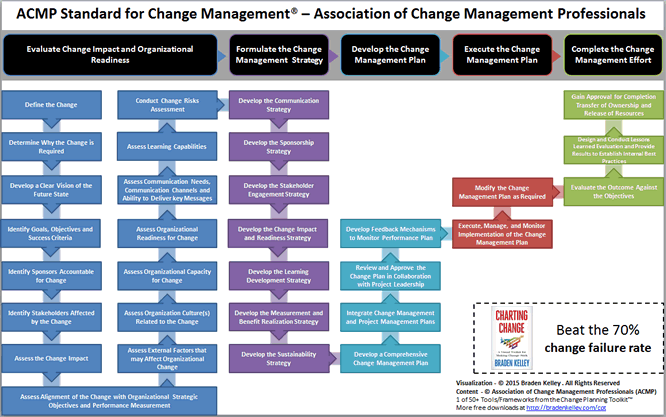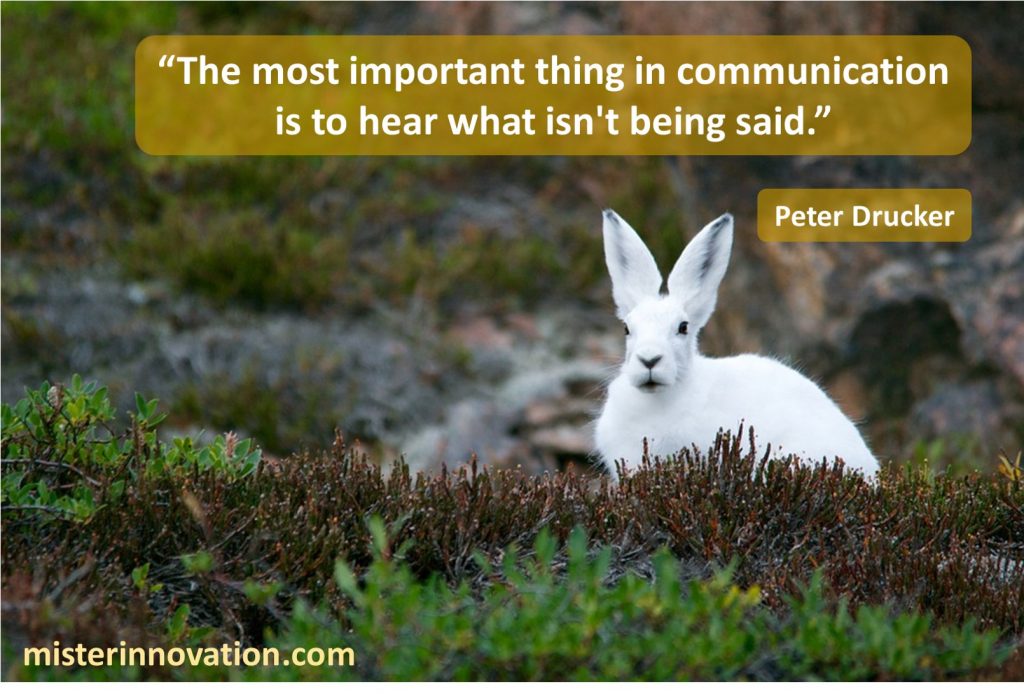
by Braden Kelley
In the ACMP Standard for Change Management the second phase is to “Formulate the Change Management Strategy” and its first step is to “Develop the Communication Strategy.”
The quality of your communication strategy and its execution is one of the most important determinants of success for your change or transformation initiative. But let’s be honest, most of us studied something other than communications in our university education and as a result don’t know the keys to successful communications. Because we have all learned how to write and speak in high school we make the mistake of thinking that we are expert communicators, but we’re not – at least without work and a conscious focus on the key principles of effective communications.
The most important of these is to know your audience and to speak to them as individuals. When it comes to change, there are many different motivations for people to choose change.
When crafting your communication strategy for your change or transformation initiative it is incredibly important for people to refer to the best practices of marketing communications. Chief among these is the recognition of the importance of segmenting your audience so you can send relevant communications to the different segments of your audience.
One of the best ways to segment your audience for change communications is to leverage The Eight Change Mindsets:
1. Mover ’n’ Shaker
- give these people the chance to be first
2. Thrill Seeker
- these people like to try new things and experiment
3. Mission-Driven
- these people need reasons to believe
4. Action-Oriented
- these people just want to know what needs to be done
5. Expert-Minded
- teach these people how to do it, and they will seek mastery
6. Reward-Hungry
- these people want recognition for adopting the change
7. Team Player
- these people are happy to help if you show them why the change will be helpful
8. Teacher
- show these people how to get others to choose change
You can download The Eight Change Mindsets as a PDF from Slideshare here:
Leveraging The Eight Change Mindsets in your change communication strategy will enable you to focus on creating the messaging, symbols and artifacts that will help each mindset choose change.
But many change managers either aren’t familiar with the basic principles of marketing communications or choose to take shortcuts and treat the entire organization as a single audience and craft a single set of communications. This is a mistake.
It’s actually a bit ironic because ProSci’s ADKAR methodology is clearly a re-purposing of marketing’s AIDA view of customer progressions:
- Awareness
- Interest
- Desire
- Action
As a quick refresher, ADKAR as a comparison is:
- Awareness of the Need for Change
- Desire to Support the Change
- Knowledge of How to Change
- Ability to Demonstrate Skills & Behaviors
- Reinforcement to Make the Change Stick
If you really want to build a better change communication plan, then crash these two things together:
- The Eight Change Mindsets for the segmentation of your audience
- ADKAR for the creation of a communications sequence
Download the PDF of The Eight Change Mindsets above or go here to get the infographic if that’s easier for you.
If you need a little more guidance or just want to save time, then I’ve added a worksheet to v13 of the Change Planning Toolkit that I introduced in my latest book Charting Change.
The “Eight Change Mindsets Communication Strategy” worksheet is but one of the 70+ tools and frameworks that you’ll get when you purchase an annual license or a lifetime license of the Change Planning Toolkit developed as part of the Human-Centered Change methodology.
I’ve designed it as an 11″x17″ work mat to use with sticky notes. But this tool, and the others in the Change Planning Toolkit, can also be provided as 35″x56″ posters to licensees on an as needed basis. In addition, these tools are also designed to be used with virtual collaboration tools like Miro, Mural, Lucidspark, Microsoft Whiteboard and others.
So, start building a better change communication strategy today!
![]() Sign up here to get Human-Centered Change & Innovation Weekly delivered to your inbox every week.
Sign up here to get Human-Centered Change & Innovation Weekly delivered to your inbox every week.

